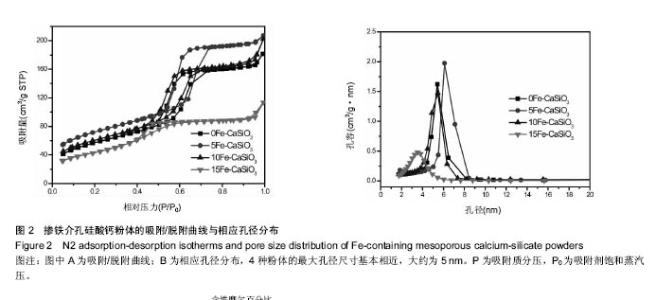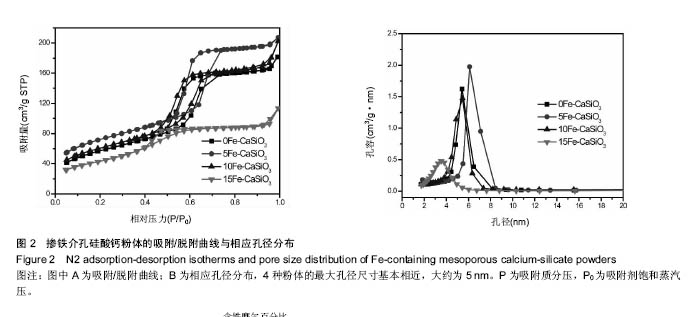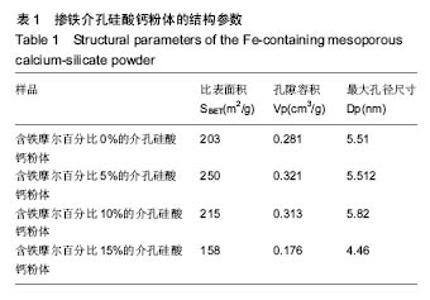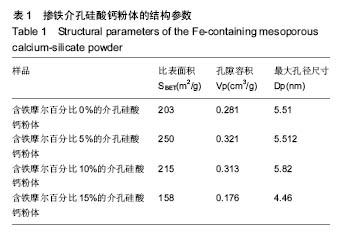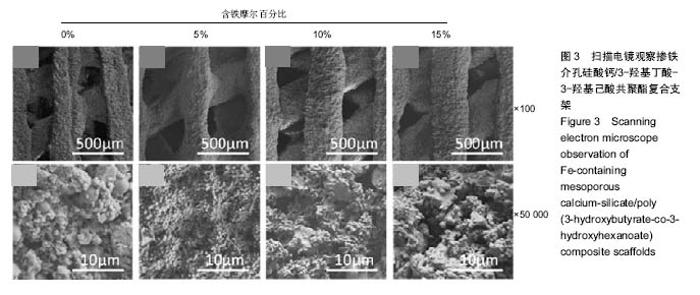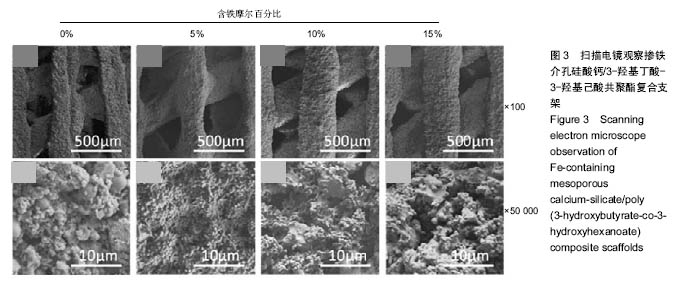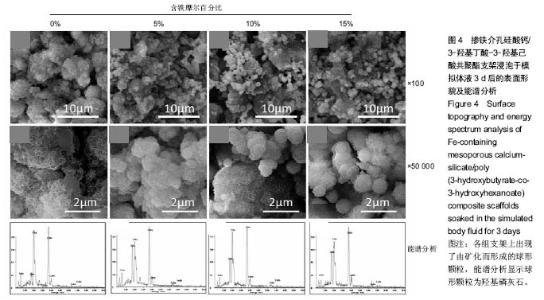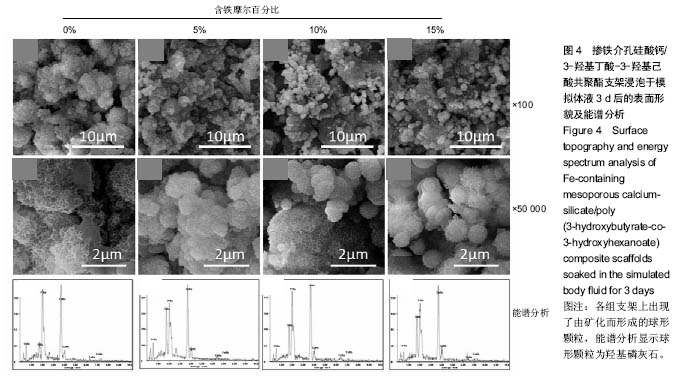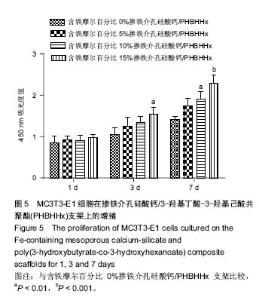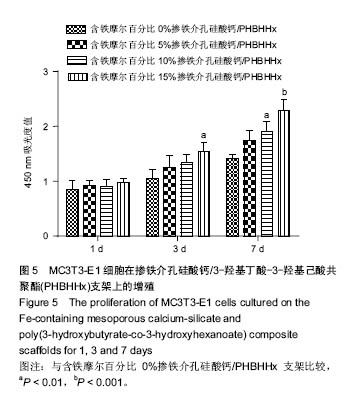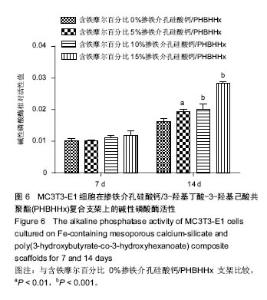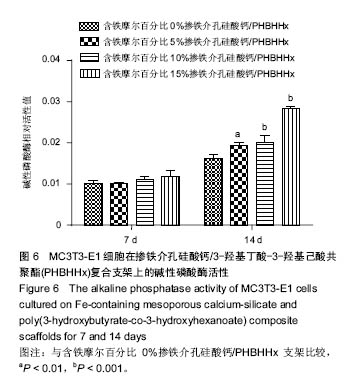| [1]Tsang VL,Bhatia SN.Three-dimensional tissue fabrication.Adv Drug DelRev.2004;56(11):1635-1647.[2]Fedorovich NE,Alblas J,Hennink WE,et al.Organ printing: the future of bone regeneration?Trends Biotechnol. 2011;29(12): 601-606.[3]Aza PND,Luklinska ZB,Anseau MR,et al.Transmission electron microscopy of the interface between bone and pseudowollastonite implant. Journal of Microscopy. 2001; 201(Pt 1):33-43.[4]Xue W,Liu X,Zheng XB,et al.In vivo evaluation of plasma-sprayed wollastonite coating. Biomaterials. 2005; 26(17):3455-3460.[5]Hench LL.Bioceramics: From Concept to Clinic. J Am Ceram Soc.2014;74(74):1487-1510. [6]Lin K,Chang J,Zeng Y,et al.Preparation of macroporous calcium silicate ceramics. Mater Lett.2004;58(15):2109-2113.[7]Ni S,Chang J,Chou L.A novel bioactive porous CaSi03 scaffold for bone tissue-engineering.J Biomed Mater Res A. 2006;76(1):196-205.[8]Meng J,Zhang Y,Qi X,et al.Paramagnetic nanofibrous composite films enhance the osteogenic responses of pre-osteoblast cells.Nanoscale.2010;2(12):2565-2569.[9]Meng J,Xiao B,Zhang Y,et al.Super-paramagnetic responsive nanofibrous scaffolds under static magnetic field enhance osteogenesis for bone repair in vivo.Sci Rep.2013;3(6151): 2655-2655.[10]Kokubo T,Takadama H.How useful is SBF in predicting in vivo bone bioactivity? Biomaterials.2006;27(15):2907-2915.[11]Melchels FP,Barradas AM,van Blitterswijk CA,et al.Effects of the architecture of tissue engineering scaffolds on cell seeding and culturing.Acta Biomaterialia. 2010;6(11): 4208-4217.[12]Wang Y,Gao R,Wang PP,et al.The differential effects of aligned electrospun PHBHHx fibers on adipogenic and osteogenic potential of MSCs through the regulation of PPARγ signaling.Biomaterials.2012;33(2):485-493.[13]Wang X,Li Y,Wei J,et al.Development of biomimeticnano- hydroxyapatite/poly(hexamethylene adipamide) composites. Biomaterials.2002; 23(24):4787-4791.[14]Loty C,Sautier JM,Boulekbache H,et al.In vitro, bone formation on a bone-like apatite layer prepared by a biomimetic process on a bioactive glass–ceramic.JBiomed Mater Res.2000;49(4):423-434.[15]Mahmoudi M,Simchi A,Milani AS,et al.Cell toxicity of superparamagnetic iron oxide nanoparticles.J Colloid Interface Sci.2009;336(2):510-518.[16]Huang DM,Hsiao JK,Chen YC,et al.The promotion of human mesenchymal stem cell proliferation by superparamagnetic iron oxide nanoparticles.Biomaterials.2009; 30(22):3645- 3651.[17]Wu Y,Jiang W,Wen X,et al.A novel calcium phosphate ceramic-magnetic nanoparticle composite as a potential bone substitute.Biomed Mater.2010;5(1):71-79.[18]Shen JF,Chao YL,Du L.Effects of static magnetic fields on the voltage-gated potassium channel currents in trigeminal root ganglion neurons.Neurosci Lett.2007; 415(2):164-168.[19]Lynn AK,Nakamura T,Patel N,et al.Composition-controlled nanocomposites of apatite and collagen incorporating silicon as an osseopromotive agent.J Biomed Mater Res A.2005; 74A(3):447-453.[20]Keeting PE,Oursler MJ,Wiegand KE,et al.Zeolite a increases proliferation, differentiation, and transforming growth factor β production in normal adult human osteoblast-like cells in vitro. J Bone Miner Res.1992;7(11):1281-1289.[21]Wu C,Ramaswamy Y,Kwik D,et al.The effect of strontium incorporation into CaSiO 3, ceramics on their physical and biological properties.Biomaterials.2007; 28(21):3171-3181. |
